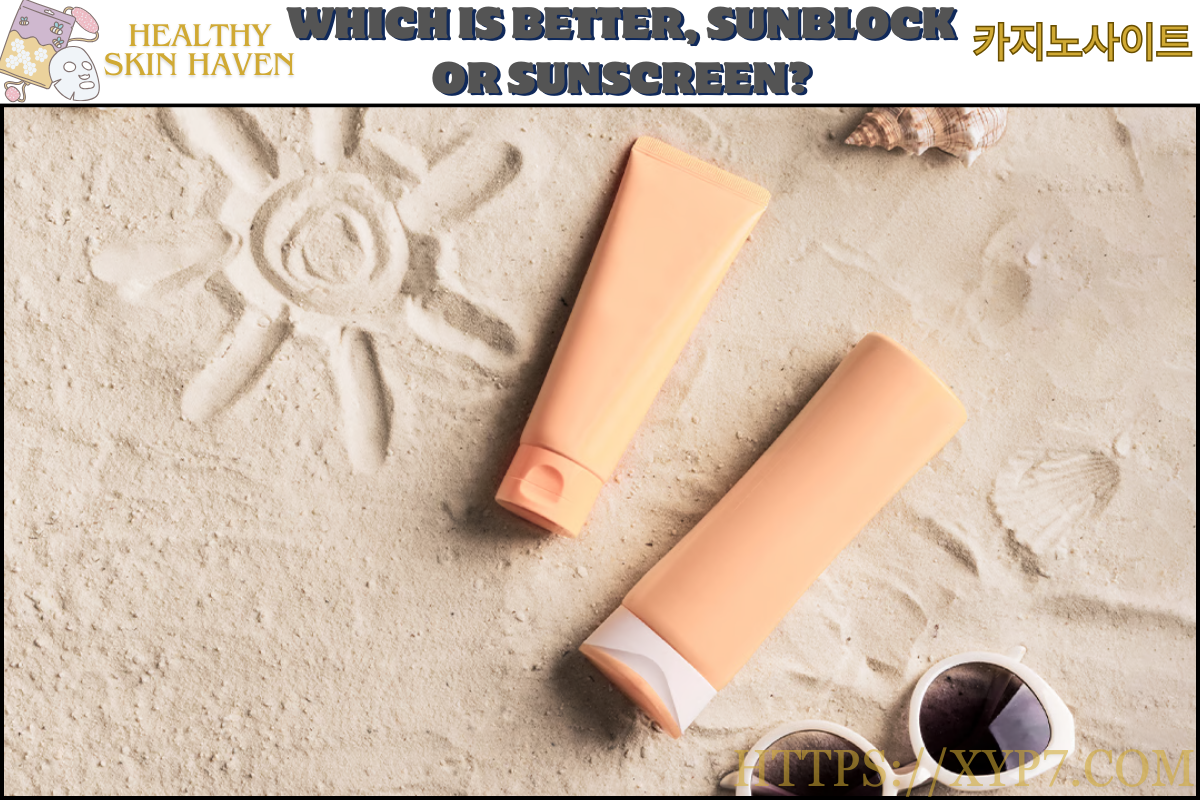Which Is Better, Sunblock or Sunscreen? The terms “sunblock” and “sunscreen” are frequently used synonymously, but they refer to two quite different kinds of sun protection.
RELATED: 6 Cosmetics With SPF Protection Integrated In

Sunscreen
Sunscreen acts as a chemical barrier, allowing UV rays to enter the skin and be absorbed before they can harm the dermal layers.
Avobenzone, oxybenzone, and para-aminobenzoic acid (PABA) are among the ingredients found in some sunscreens that are designed to absorb UV radiation.
Sunblock
Sunblock is a tangible means of protecting skin from ultraviolet radiation. It serves as a barrier by resting on top of the skin. Sunblock usually contains titanium oxide or zinc oxide. When sunblock is applied to the skin, it is frequently opaque and noticeable.
A lot of sun protection brands combine sunscreen and sunblock in one product.
Which is better: sunblock or sunscreen?
Sunscreen and sunblock offer similar levels of protection against the sun.
But while selecting the ideal product for you, the Skin Cancer Foundation advises taking your skin type into account.
Zinc oxide and titanium dioxide sunblocks are more tolerable for those with sensitive skin. Since children have different needs when it comes to sun protection, these ingredients are also frequently found in products for them.
People who have sensitive skin, such as those with rosacea or acne, should stay away from products that include fragrances, preservatives, and PABA or oxybenzone, which are frequently found in sunscreens.
SPF: What is it?
The abbreviation for sun protection factor is SPF. It’s a measure of how effectively a product will shield you from UVB (ultraviolet B) radiation from the sun.
The SPF number indicates how long it takes for skin to turn red when exposed to the sun while wearing protection as opposed to when it doesn’t.
An SPF-30 product will take the sun 30 times longer to burn skin when applied precisely as instructed, compared to skin that is directly exposed to the sun without protection. SPF 50 products will require fifty times more time.
Additional significant label information
The following terms may appear on labels for sun protection products:
Resistant to water
Manufacturers will no longer be permitted by the FDA to claim that their products are waterproof.
Seek for items that can withstand water. This indicates that the protection will work in the water for forty minutes before needing to be reapplied.
Generally, products marked as highly water resistant can withstand 80 minutes submerged in water.
Broad spectrum
A product that is considered broad spectrum is capable of protecting against UVA and UVB radiation.
Sports
Although the FDA hasn’t given its approval for sun protection, this term is frequently used to denote sweat and water resistance.
Sensitive skin
The phrase “sensitive skin” isn’t officially approved by the FDA for sun protection, but it generally means that the product is hypoallergenic and doesn’t contain PABA, oils, or fragrances.
Check the label before using to determine which of these ingredients might irritate your skin.
Ultraviolet radiation
Heat, UV rays, and visible light are all present in sunlight. UV is separated into three categories based on wavelength.
UVA
UVA radiation, which makes up approximately 95% of all UV radiation that reaches the Earth’s surface, has a relatively long wavelength that allows it to reach the skin’s deeper layers.
In addition to causing instant tanning, it also ages and wrinkles skin and increases the risk of skin cancer.
UVB
Because of partial atmospheric blocking, medium wavelength UVB can’t go below the skin’s surface layers.
Burning and delayed sun tanning are caused by UVB rays. It can also exacerbate skin aging and encourage the emergence of skin cancer.
UVC
The Earth’s atmosphere completely blocks ultraviolet C (UVC) radiation with short wavelengths. Sun exposure is not a concern. However, exposure to an artificial radiation source can make it dangerous.
Conclusion
Before buying and using the product, take the time to read the label as many sun protectants contain both sunscreen and sunblock.
Seek for products with water resistance, broad spectrum protection, and SPF 30 or higher. Products with ingredients that your skin might be sensitive to should be avoided 카지노사이트.
Reapply sunscreen every two hours, or 40 to 80 minutes after swimming or perspiring, to avoid burning.
